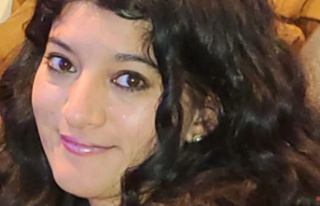In the 1990s, Michael Gardner arrived in Miami as a black entrepreneur. He was also confronted with resistance from the rest of Miami Beach, particularly the nightclub scene.
Threety years later, the legendary Fontainebleau Hotel on the Beach hosts a hip-hop party called LIV on Sunday.
Headliner is a docu-series about a super-promoter who claims Miami Beach was "zero percent black" when he arrived in 1991.
He says, "The racism, trying over there to be accepted was difficult, especially for me as young black man." "It was more or less me trying navigate between both the worlds."
Gardner didn't always intend to be a nightlife promoter. He recalls that he wanted to be "like Mike", referring to the basketball legend Michael Jordan. After he missed curfew at an away game, he was kicked out of University of Miami and his dream was cut short.
Gardner instead embarked on a new journey that saw him try to overcome initial resistance to hip-hop culture's introduction in mainstream Miami.
Although he did not achieve his success easily, he is now one of the most well-respected promoters in the city.
According to the Miami Times, "If Gardner is not a household name, it might not be your fault." He isn't a man who boasts about his involvement in important Miami stews.
"He navigates the chaos in Miami after dark with an assured, soft-spoken confidence that he has cultivated over years of hard trial and error."
Gardner reflects on the difficulties he experienced when he first tried to enter the industry. "Black men have a desire to prove something. That's what I experienced on the Beach... It became my motivator."
The homeless man lived in the back yard of his cousin's barbershop. His first party as a promoter was a failure.
It was not a good thing that Miami's vibrant nightlife scene was not welcoming to blacks, especially at night when it came to hip-hop.
For years, the city's glamour and glitz was restricted to Miami Beach. There, clubs blasting house and pop music kept the party going, while there was a stigma surrounding black dancing and clubbing.
Gardner says that it was evident as far as the division and racism, and being accepted over there at the Beach. "There were some clubs that we weren't allowed into... or should I say, they weren't accepting.
They wouldn't let us into the club. They would leave us there for three to four hours just so we could get into the club. It is impossible to know the personality of a person. I wanted to have fun and be normal.
These same problems still exist today. After a group of black partygoers claimed that they were denied entry to a Miami club, Cardi B confronted the bouncers. Although the club denied that this was true, the public debate about city door policies reignited.
Headliner uses the symbol of bridges linking mainland Miami and the beach as a metaphor for the division between real Miami, as it is experienced by the black community, versus the glamour of Miami Beach. He says, "I was aware that the two sides."
Miami is divided into diverse enclaves, some deliberately and others less so. The fracture was deliberate for the black community.
One example is the creation of Interstate-95 through the Overtown neighborhood in the 1950s and 1960s. This created a fractured black community in an area that was once called the Harlem of the South. These urban enclaves in Miami are still present and have shaped Gardner's life.
He also refers back to a time in which entertainers such as Sammy Davis Jr. would perform at venues such the Fountainebleau. However, they "had to leave the Beach to come to Overtown" since, being black performers, they weren't allowed to stay at hotels along Miami Beach.
Things had changed in the 2000s when hip-hop was a defining phenomenon. Gardner says, "[It] just became dominant."
Gardner credits Luther Campbell, a member of the 2 Live Crew who Gardner considers an "uncle", for fighting for hip-hop acceptance and inclusion in Miami. It is a wonderful feeling to see the transformation of the poor communities and then be able to accept hip-hop. It makes me smile."
Gardner believes hip-hop's authenticity is what made it so popular. "You can see people getting murdered, people using drugs, and they live in broken homes. These stories are intriguing and people find them fascinating in hip-hop.
After hosting parties in nightclubs that were on the brink of collapse, Gardner was invited as LIV's host for Sunday, August 2008. The Fountainebleau Hotel and LIV Nightclub, inside, have been a success unlike his previous venues.
When asked by Michael Gardner to describe LIV, he smiled and said, "Fascinating". Close your eyes and visualize the infinite possibilities... the lights, people, the blaring music, atmosphere, it's all a show.
Gardner states, "Those stories kind of shaped me," He laughs and says, "I have a million stories."
The promoter smiles and says, "To give back the community means everything for me." He says, "I need people, the people don’t need me." He clarifies that it is not as if he is selling gasoline. "I'm selling a good time. I've always been indebted the people."
He smiles every time and says that "just to see people's joy on their faces" is everything. He says that even though many of his events don't generate much publicity, it doesn't bother him. "That's not what it is for."
His charitable work includes the Overtown Music and Arts Festival. This free event attracts Grammy-winning artists and offers hours of entertainment, crafts, and art.
Pampering with a Purpose is also hosted by Gardner. It offers manicures, haircuts and massages to local residents. It takes away a burden from them... it gives them hope. It's impossible to feel like that."
"It's a wide group of people that benefit, it's just set in black communities because they're those who are most in need."












